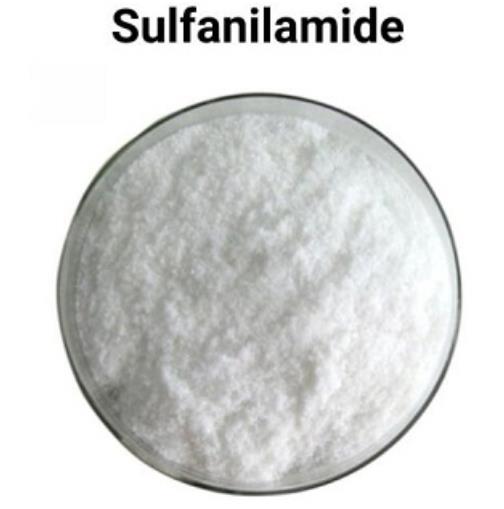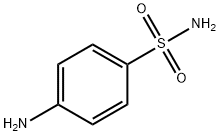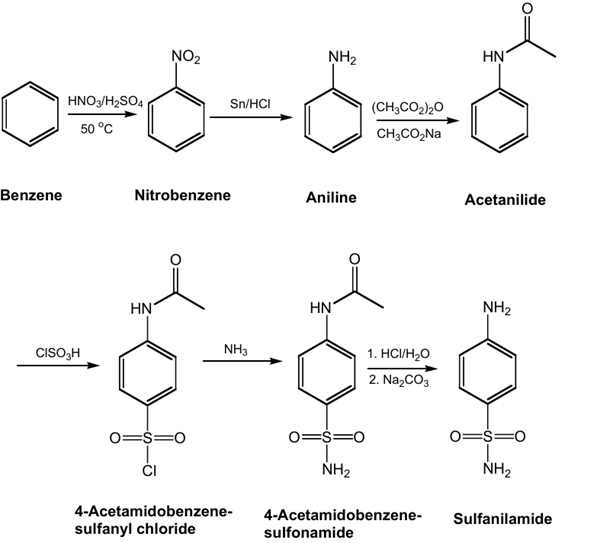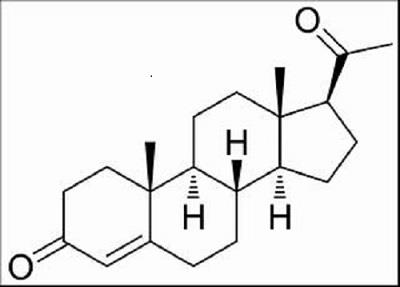Sulfanilamide: A Cornerstone in Synthetic Antibacterial Applications
Introduction
In the realm of medicinal chemistry, few compounds have played as pivotal a role as sulfanilamide. This synthetic antimicrobial agent, belonging to the sulfonamide group, has laid the foundation for numerous therapeutic strategies targeting bacterial infections. Originally synthesized in the 1930s, sulfanilamide quickly became a cornerstone in the treatment of various bacterial ailments due to its broad-spectrum efficacy and novel mode of action. It marked a significant breakthrough in the fight against infectious diseases, transforming medical practice and leading to the development of a whole class of sulfonamide drugs. Its impact on public health has been profound, revolutionizing our approach to controlling and treating bacterial infections worldwide.

Figure 1 Characteristics of Sulfanilamide
Properties
Sulfanilamide, chemically known as 4-aminobenzenesulfonamide, is characterized by its simple yet effective molecular structure. The compound features an aniline derivative bonded to a sulfonamide group, which is pivotal for its antimicrobial activity. It is a crystalline, white solid at room temperature, soluble in water and organic solvents, which facilitates its formulation into various medicinal preparations. Its efficacy stems from its ability to inhibit the bacterial enzyme dihydropteroate synthase, crucial for folate synthesis, thereby hindering bacterial growth and replication.
Main Components
The structure of sulfanilamide is the backbone for numerous derivatives, which are formulated to enhance its pharmacokinetic properties and reduce potential side effects. Modifications typically occur at the N4 and/or C6 positions of the benzene ring, leading to compounds with varied solubility, absorption rates, and therapeutic spectrums. Despite its simplicity, the molecular integrity of sulfanilamide allows for extensive modification, making it a versatile tool in drug development. These structural adaptations can specifically target different bacterial enzymes or pathways, thereby increasing the effectiveness and specificity of sulfonamide-based treatments. Such flexibility has enabled the development of second and third-generation sulfonamides, optimized for better patient outcomes and reduced resistance.
Applications
Sulfanilamide's primary application lies in its antibacterial activity. Historically, it was used to treat a plethora of bacterial infections including urinary tract infections, streptococcal infections, and some types of meningitis and pneumonia. It also played a crucial role during World War II, serving as a frontline treatment for battlefield wound infections, which significantly reduced mortality rates. Beyond its direct medical applications, sulfanilamide also serves as a precursor in the synthesis of more advanced sulfonamides and other related drugs, expanding its utility in pharmaceuticals. Additionally, its mechanism of action has been a subject of study in biochemical research, aiding in the understanding of bacterial resistance and the design of novel antibiotics. This research has further facilitated the exploration of sulfanilamide analogs in other therapeutic areas, such as anticonvulsant drugs and diuretics, showcasing its versatility and importance in modern medicine.
Storage Methods
The storage of sulfanilamide requires specific conditions to maintain its chemical stability and effectiveness. It should be stored in a cool, dry place away from light, as exposure to moisture and ultraviolet light can lead to the degradation of the compound. Optimal storage temperatures are typically below 25 degrees Celsius. Sulfanilamide is typically packaged in tightly sealed containers to prevent contamination and extend its shelf life. Proper storage is crucial not only to preserve the efficacy of the compound but also to ensure safety during its handling and use in various applications. This careful handling helps to maintain its integrity over long periods, ensuring it remains potent and safe when administered.
Conclusion
Sulfanilamide remains a testament to the power of synthetic chemistry in combating infectious diseases. Its discovery and subsequent modifications have paved the way for the development of a broad spectrum of antibacterial agents that continue to play critical roles in public health. For professionals in the chemical and pharmaceutical industries, sulfanilamide represents both a historical milestone and a continuing source of inspiration for new therapeutic avenues. As research progresses, the legacy of sulfanilamide is likely to expand, underscoring its significance in the annals of medical science.
References
[1]Marshall, E. K., W. C. Cutting, and Kendall Emerson. "The toxicity of sulfanilamide."Journal of the American Medical Association110.4 (1938): 252-257.
[2]Wang, **an-Long, Kun Wan, and Cheng-He Zhou. "Synthesis of novel sulfanilamide-derived 1, 2, 3-triazoles and their evaluation for antibacterial and antifungal activities."European journal of medicinal chemistry45.10 (2010): 4631-4639.
You may like
Related articles And Qustion
See also
Lastest Price from Sulfanilamide manufacturers

US $0.00-0.00/kg2025-10-24
- CAS:
- 63-74-1
- Min. Order:
- 25kg
- Purity:
- 99%-101%; BP
- Supply Ability:
- 1000KGS

US $0.00/kg2025-04-25
- CAS:
- 63-74-1
- Min. Order:
- 1kg
- Purity:
- 0.99
- Supply Ability:
- 1000kg




